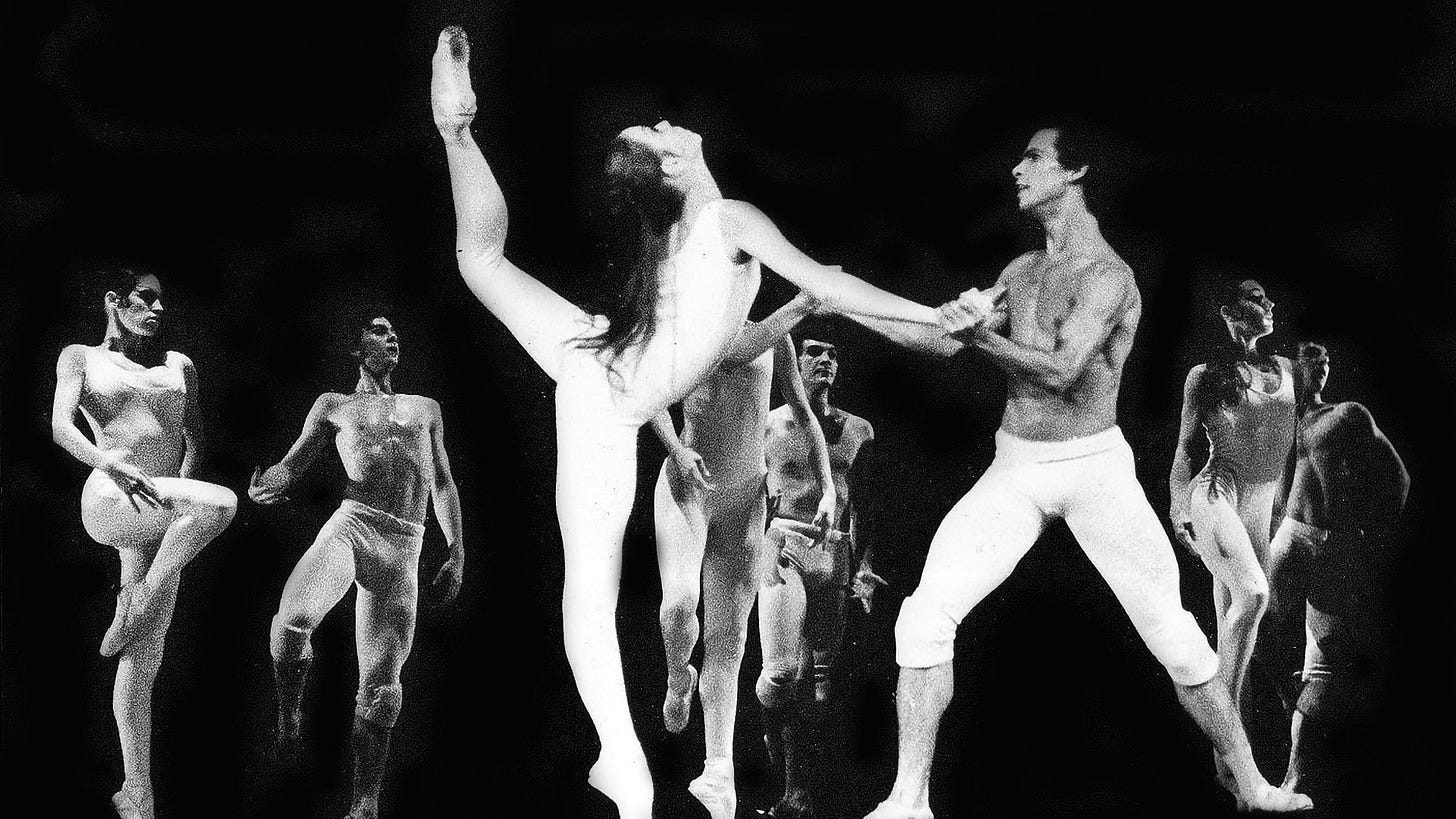An American Ballet Story
This documentary about the rise and fall of Rebekah Harkness' admired and reviled ballet company shows the human story behind an art form many find remote.
Ballet to me is like opera and poetry: things you’re supposed to like if you’re halfway smart and into the arts, but are made to feel ashamed if you find them uninteresting and even rather dull. I remembering going to some professional stagings of “The Nutcracker” when I was a kid, and though I was impressed with the athleticism and artistry of the dancers, as a piece of narrative I found it rather remote and unemotional.
I’ve seen a handful of other ballet since, with the same take.
Somebody — I’ve variously heard it attributed to Eric Clapton or Martin Mull — said that “Writing about music is like dancing about architecture.” I’ve kind of always felt the same way about dancing as a medium for telling a story.
Great example: I love the dance sequences in “Singin’ in the Rain” because they always tie into the tale. But I get rather bored at “An American in Paris,” even though it also features Gene Kelly, because it’s just tip-tap-toodlin’ that goes on and on for its own sake.
“An American Ballet Story” works as a documentary because it shows the human side behind a professional ballet company. In this case, that of Rebekah Harkness, a wealthy devotee of the art form who went from supporting ballet troupes to starting her own. They traveled the world, played in all the big venues and eventually folded when she grew older, less engaged and less rich.
Directed by Leslie Streit, it’s an engaging doc that does what good ones do: shows you a community that may seem strange or even off-putting, and gradually makes you understand the people who formed them and why they poured so much of their lives into it.
There is egotism, ambition, sex, passion, enmity and all the other qualities of a great story. I’m still not sure if I’d like to watch a full-length ballet, but this movie kept me hooked.
You may not have heard of Harkness — I hadn’t — but she was a well-known philanthropist in her day. Taylor Swift is an admirer and even wrote a song about her. Like a lot of bluebloods she was an ardent lover of the arts and dilettante practitioner, though apparently self-aware enough to know she lacked the talent to make it a vocation.
After her husband died, Harkness began investing in ballet, eventually underwriting Robert Joffrey in the early 1960s when he was financially strung out. This resulted in some terrific works. But tension grew as Harkness desired to have her own company with her name on it, which she created a few years later — taking many of Joffrey’s troupe with her.
The documentary then takes us through the next dozen years or so, talking to many of the dancers and directors themselves, as well as archival interviews with Harkness. Figures include Brunilda Ruiz, Paul Sutherland, author Sasha Anawalt, costume designer Jac Venza, Bob Scevers, Andrea Cagan, Joan Finkelstein, Finis Jhung and many other storied figures in the craft.
Harkness was someone of great ambition, passion and generosity. But like a lot of rich people, she had grown used to getting her way. This led to continual disagreements with her directors, who during one stretch changed every year.
In general Harkness liked newer forms of dance and allowed her players to do jazz and modern interpretations, to an extent. She still clung to the classical form and resisted when they pushed the envelope, “rolling around on the floor” too much for her tastes.
A would-be composer and arranger, Harkness also insisted on using her own music in the early days, which led to sniffing from the critics and high society types. New York Times critic Clive Barnes seemed to personal delight in trashing Harkness productions.
At one point she essentially fired the entire troupe of dancers and the directors, and replaced them with the youth group she had started a few years earlier to act as students and understudies.
Still, she provided a school for young people to pursue ballet professionally, completely cost-free, and brought in people of diverse ethnicity and background at a time when that was not favorably looked upon. And Harkness built a magnificent performance hall in New York for about $28 million in today’s dollars to serve as their home base.
I won’t even try to pass an opinion on the many sequences of dance we see, from long-lost black-and-white footage of rehearsals to full stage performances. It’s say my take is about the same as it was all those years ago: it’s impressive, but I’m not really into it. I’m sure someone more cultured than me can appreciate it better.
But I was always engaged by the story of what went on behind the stage, if not on it.
“An American Ballet Story” is making is way around the festival circuit.





